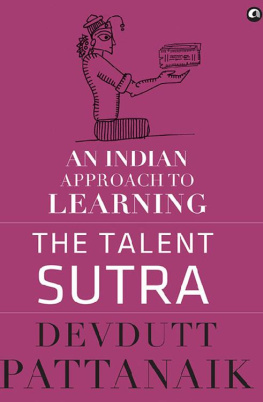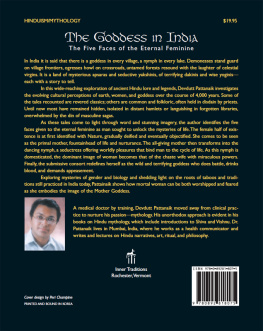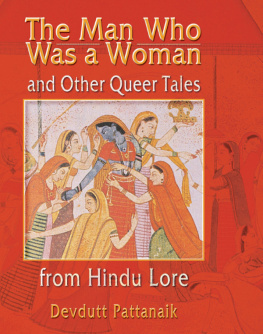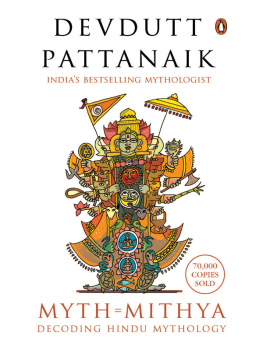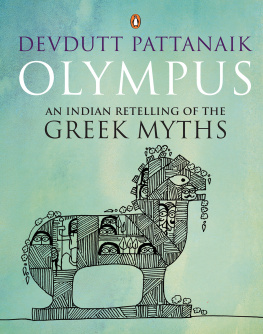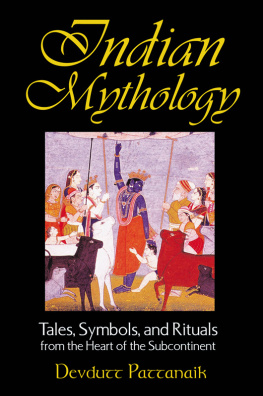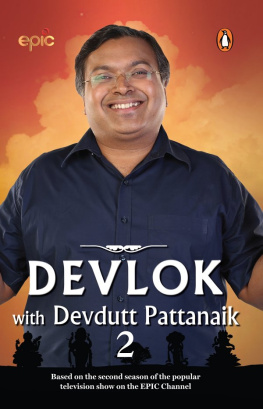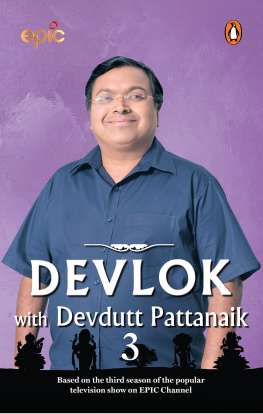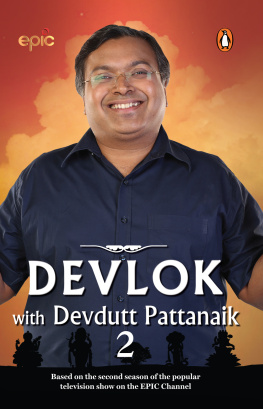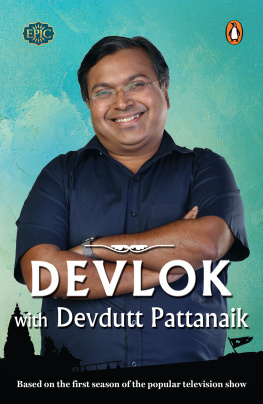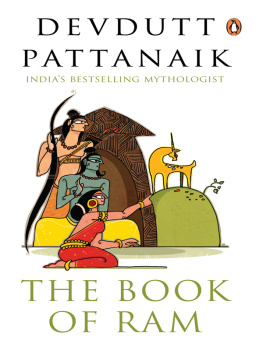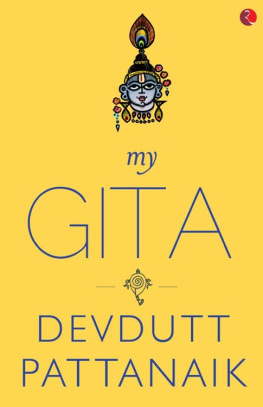Table of Contents
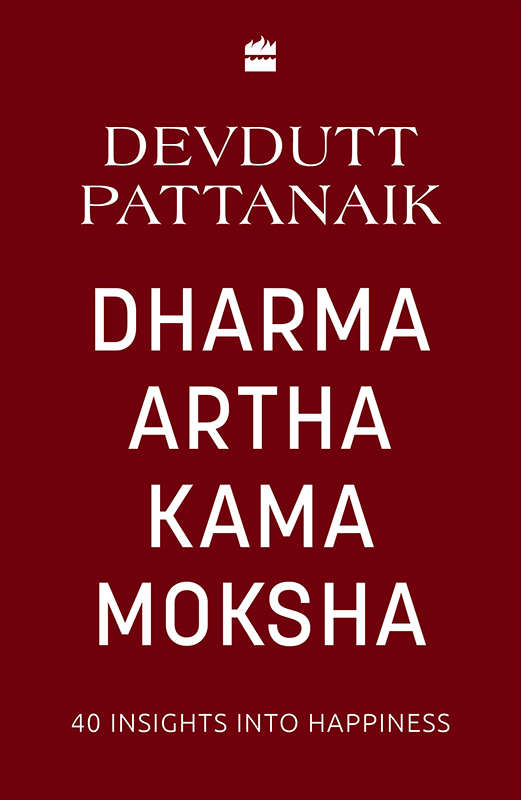


By the same author

Contents

H ow can we as human beings live a happy and meaningful life (purusha-artha)?
According to ancient Hindu scriptures there are four pillars (chatur-varga) that can help us do that: dharma, artha, kama, moksha.
- Dharma is about ones responsibility to society at large.
- Artha is about achievement and success.
- Kama is about intimacy, sensual and sexual pleasures.
- Moksha is about freedom from bondage and worldly suffering.
To appreciate this concept, we need to hear the story of Indra, King of Paradise, who one day called upon his architect, Vishwakarma, to build him a palace worthy of godly glory. Vishwakarma built Indra a palace, but it didnt satisfy the king. So, he built a bigger and grander palace. But even this was not good enough for Indra, and Vishwakarma built yet another palace. But no matter what Vishwakarma created, Indra remained unsatisfiedIndra felt that his glory was not matched by the opulence of the structures Vishwakarma was building. Desperate, Vishwakarma went to Vishnu and asked for help. Vishnu appeared in front of Indra, in the form of a child. Indra took him around, showing him the many palaces built by Vishwakarma. Indra then very sheepishly added that none of them really matched his greatness. Vishnu, as the little boy, was not impressed and informed Indra that, although wonderful, his palaces were not as wonderful as the palaces of all the Indras who had lived before him.
This comment startled Indra, and he asked the boy what he meant by lived before him: wasnt he unique? The boy laughed and replied that there were many Indras in the world: there had been many Indras before him and there would be many after him. Right at that very moment, in fact, there existed as many Indras in different realms as there were grains of sand on a beach. Each was trying to build a palace worthy of his glory but none was succeeding. Indras came and went with the seasons; and in the universe, which is a canvas of infinity, each Indra is eventually reduced to nothingness. Indra realized that in the denominator of infinity, which is the universe, he had no essential value.
The idea of value (mulya), therefore, bothered the sages of India known as rishis. They kept asking what value meant if nothing matters when placed against the canvas of infinity. They observed nature carefully and passed on their learning through the Vedas and Puranas.
They observed that the elements fire, water and wind do not consume anything, for they value nothing. Plants on the other hand value the elements, as they consume them in order to survive. Plants seek sunlight, they need air, they need water, they need the earth to survive and seek out valuable nutrients.
Thus, value is created when the consumer gives value to the commodity they consume. Plants give value to the elements by consuming them, animals give value to plants by consuming them, animals give value to other animals by consuming them. Food, the act of bhog or eating, creates value.
Humans consume everything: they consume plants, animals, minerals. We find value in everything and by consuming them we give value to nature around us and transform it into various commodities. The question, then, is what gives value to humans. Who consumes humans, who eats humans?
Now humans have found a very innovative way of creating value without being consumed physically, unlike plants and animals. We create value through the goods and services we exchange in the marketplace. This bestows value on us as providers. That is the unique capability of the human being.
Unlike animals whose bodies are consumed by their predators, humans create value that can be consumed by other human beings in the marketplace. Not only can we create value and exchange value, but we can also collect value. We can gather property. By gathering things, we give ourselves value. In most societies, one is valued for the value one gathers, in terms of material prosperity. I am what I gather; I am what I have. Therefore, like Indra, we keep building and collecting more and more, becoming valued members in society who possess a lot of things.
The Vedas say that Artha is about generating food, by creating goods and services, while Kama is about satisfying this hunger. In Dharma, we consider the hunger of others and in Moksha, we outgrow our hunger. Only when we outgrow hunger can we be generous and charitable and let things go. Thus, rise the four pillars:
- Dharma (where we give value for others to consume)
- Artha (where we generate value)
- Kama (when we enjoy value)
- Moksha (when we outgrow the need to consume value)
Indra has not outgrown his hunger for things and therefore he is seeking value for himself by collecting things. Therefore, he is unable to be generous. He seeks value from the things he possesses. But in the Indian scheme of things, ultimately all things must be consumed.
Possessions do not give us value; wisdom gives us value. The realization that nothing lasts forever must help us in outgrowing our hunger. Only by satisfying other peoples hunger do we truly bring value to society. Only when we outgrow our hunger can we be truly generous.

Neuroscientists are now observing that various hormones released in our body play a key role in our happiness, and these hormones are linked to the four Hindu pillars of meaning. For example, there is serotonin that is associated with happiness, and, in its absence, there is depression. There is dopamine that gives us a sense of exhilaration or achievement, and in its absence, there is a sense of worthlessness. There is oxytocin that is released during intimacy. There are various endorphins that are released during workouts, or when we are stressed, or when we laugh, that create a pleasurable feeling, comforting us.
Happiness is now seen as having many components: satisfaction, achievement, intimacy, comfort. It is being distinguished from pleasure. Pleasure is short-term. Happiness is long-term. Pleasure is individualistic. Happiness is social. Pleasure is seen as visceral, while happiness is seen as ethereal. One can get addicted to pleasure, but one cannot get addicted to happiness.
Pleasure is related with a release of dopamine and comes when there is sense of achievement. The more dopamine is released, the more we get addicted to it. We want more and more of it. This is what happens with drugs, like cocaine, that create an artificial sense of achievement, after which any other achievement falls short. Our craving for dopamine causes a situation where the brain fails to produce enough serotonin, as a result of which yearning for pleasure causes a decrease in general happiness. Hence, this results in depression.
This modern architecture of happiness mirrors the four-fold path of happiness prescribed in ancient Hindu scriptures. Dharma contributes to satisfaction; Artha to achievement, to exhilaration of success; Kama to pleasure and intimacy; Moksha to relief, resulting from letting go. We need a mixture of the four to be happy. And we realize that each of these four pillars of human meaning or purushaarthas can be mapped to the happiness hormones identified by neuroscientists.


